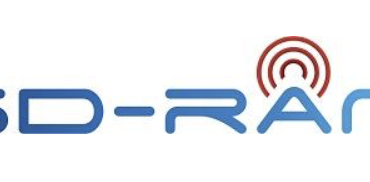The Opening of 5G Networks Takes Shape

Momentum is building to pull apart and expose 5G network interfaces in hopes of developing open source software for key components like radio access networks, or RANs. Among the goals is expanding the ecosystem of 5G developers as the race heats up to deploy the low-latency broadband pipes for emerging enterprise applications.
The latest push comes from the Open Networking Foundation (ONF) which this week unveiled a software-defined radio access network (SD-RAN) project that will initially focus on developing an intelligent network controller that complies with the open architecture and network interfaces specified by the O-RAN Alliance.
Formed in February 2018, the O-RAN Alliance includes wireless carriers, hyper-scalers and network equipment makers. Founding members include AT&T, China Mobile, China Unicom, Deutsche Telekom, Facebook, Google, Intel, NTT, Radisys and Sercomm. As 5G deployments ramp up, these and other groups seek to open up wireless networks dominated by full-service telecom equipment giants like Ericsson, Huawei Technologies, Nokia and Samsung Technologies.
The SD-RAN project announced on Tuesday (Aug. 25) also includes development of application interfaces that would apply machine learning to base station functions such as network handovers or load balancing. Those RAN functions have traditionally been proprietary on base stations. The effort underscores how industry groups like ONF are attempting to disaggregate network infrastructure in order to add intelligence and functionality as 5G wireless network are deployed.
The foundation of the SD-RAN project is a near real-time RAN intelligent controller that complies with O-RAN specs. The microservices-based network controller represents an upgrade of the enterprise-grade SDN controller, the Open Network Operating System. ONOS is designed to support SDN and network function virtualization rollouts.
The SDN project would upgrade the controller with cloud-native features that collectively would deliver intelligent RAN functionality like active clustering. It would also be designed to control equipment from multiple vendors that comply with the O-RAN Alliance architecture.
Meanwhile, application interfaces dubbed xApps running on top of the controller would perform network functions previously handled by proprietary implementations. That would enable a primary goal of the SD-RAN project: providing “external intelligent” RAN control that would give operators greater visibility into network functions.
Additionally, it would bestow on operators “ownership and control over how spectrum is utilized and optimized along with the tools to deliver an optimal experience for users and applications,” ONF asserted.
SD-RAN and other open 5G component efforts reflect an expected boom in the radio access market as operators hustle to plug “last-mile” gaps with small cells while tapping promising enterprise markets like edge clouds. For example, market tracker Dell’Oro forecasts that RAN revenues could reach $200 billion by 2024.
ONF pegs the “foundational” SD-RAN market at more than $100 billion. Among the key components are small cells used to move 5G connectivity closer to users. Small cells could account for as much as 20 percent of the market, and are seen as a way for smaller equipment vendors to gain a foothold and expand the 5G ecosystem.
Among the potential drivers are emerging enterprise applications like edge clouds and private 5G and LTE networks. Those are addressed in another project dubbed Aether. The platform is billed as combining open RANs with edge clouds for emerging Internet of Things applications and private 5G networks that could help connect, for instance, industrial IoT deployments.
Timon Sloane, ONF’s vice president of marketing and ecosystem, said Aether could be used to orchestrate multiple edge clouds from a core network running on a “central,” public cloud. Small cells could be used to connect edge sites with sensors, IoT deployments and other 5G-based networks.
In one multi-cloud scenario, SD-RAN and other elements of the Aether edge stack running on Kubernetes and SDN infrastructure would deliver network controls and applications via Amazon Greengrass, Microsoft Azure IoT and the Google Edge Cloud.
ONF has been running Aether as pilot network since December 2019, with an application development pipeline pushing updates on an active network.
As the foundation prepares for network testing, a parallel group dubbed the Open RAN Policy Coalition is seeking to attract public cloud providers. The coalition includes Cisco Systems, wireless chip maker Qualcomm and other 5G component makers. The group was also formed in response to U.S. efforts to blunt Huawei’s dominance of the 5G network hardware market.
While the latter group has a policy bent, ONF and its efforts to comply with the O-RAN framework seek to create a “marketplace of interoperable [5G] components,” said Sloane. “The RAN market is poised for disaggregation.”
Open source RAN components from multiple vendors will be integrated for upcoming interoperability trials, Sloane added in an interview. Those efforts respond to calls from networks operators like AT&T and T-Mobile for open controllers and application interfaces via partnerships with ONF. Those partnerships have attracted hardware and software providers like Intel and Facebook along with component vendors such as Radisys and Sercomm.
ONF said it expects to begin field trials of the umbrella SD-RAN project in early 2021. The trials will include “carrier-grade” components that implement the open application interface approach to RAN deployments.
Related
George Leopold has written about science and technology for more than 30 years, focusing on electronics and aerospace technology. He previously served as executive editor of Electronic Engineering Times. Leopold is the author of "Calculated Risk: The Supersonic Life and Times of Gus Grissom" (Purdue University Press, 2016).












